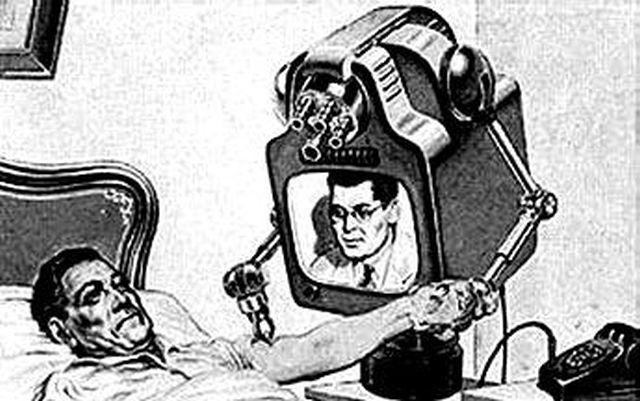Teledoctors: Reinventing Access to Healthcare Services
Teledoctors: Reinventing Access to Healthcare Services
Blog Article
Teledoctors: Linking the Gap In Between Clients and Doctor
The development of teledoctors represents a significant change in the medical care landscape, using solutions to long-lasting access concerns dealt with by service providers and patients alike. By incorporating telemedicine into conventional practices, medical care systems can reach remote and underserved populaces, giving essential clinical examinations without the obstacles of range and travel. This standard shift not just improves client engagement yet likewise optimizes source allotment for companies. However, the prevalent fostering of teledoctors raises vital concerns concerning the sustainability of such methods and the implications for future medical care delivery. What obstacles lie in advance in ensuring this model's performance and equity?
Increase of Telemedicine

The rise of telemedicine is also sustained by the demand for cost-effective health care. Health care systems worldwide are under pressure to decrease expenses while preserving top quality treatment, and telemedicine uses a feasible option. By minimizing the demand for physical gos to, telemedicine decreases above expenses for medical care centers and inevitably lowers the economic worry on patients.
Furthermore, the COVID-19 pandemic served as a catalyst, speeding up the fostering of telemedicine techniques. Social distancing procedures and the need to decrease direct exposure risk necessitated a shift in the direction of remote examinations, triggering governing bodies to adapt and sustain telehealth services. This shift has not just tried and tested telemedicine's effectiveness but additionally its prospective to advance as a staple element of contemporary healthcare systems.
Benefits for Clients
As telemedicine proceeds to reshape health care delivery, people stand to get considerably from this transformation. Primarily, telemedicine improves access, allowing individuals in underserved or remote locations to seek advice from healthcare companies without the need for substantial traveling. This is particularly useful for individuals with wheelchair concerns or those staying in rural regions where medical care centers might be limited. Telemedicine also uses patients the ease of obtaining clinical suggestions and therapy from the comfort of their homes, minimizing the moment and expense associated with traveling to a health care facility.
Additionally, telemedicine supports continuity of treatment by assisting in routine follow-ups and tracking, which are essential for taking care of chronic conditions. People can quickly schedule consultations and access healthcare services outside conventional office hours, suiting their hectic lifestyles. This flexibility leads to boosted individual involvement and adherence to treatment plans, possibly leading to better wellness results.
Additionally, telemedicine can assist mitigate the danger of infection transmission, an issue increased by the COVID-19 pandemic. By decreasing the need for in-person gos to, individuals can stay clear of congested waiting rooms and lower direct exposure to transmittable illnesses. Ultimately, telemedicine equips clients by providing timely, efficient, and individualized healthcare solutions.
Advantages for Carriers
For health care providers, telemedicine offers significant advantages that enhance the efficiency and reach of their method. By leveraging electronic technology, service providers can prolong their services to a wider market, consisting of those in remote or underserved areas. This not only visit their website minimizes geographical obstacles yet also enhances individual retention and procurement by making medical care extra easily accessible.
Another trick advantage is the reduction in overhead expenses. With telemedicine, the demand for physical space reduces, permitting suppliers to reduce property and operational costs. Additionally, telemedicine assists in much better time monitoring by decreasing the demand for commuting and allowing for even more adaptable organizing. This flexibility can lead to enhanced individual appointments each day, therefore enhancing revenue potential.
Telemedicine additionally cultivates an extra joint atmosphere for health care carriers. teledoctors. It allows seamless sharing of client information among specialists, boosting analysis accuracy and treatment end results. In addition, digital platforms can incorporate with digital health and wellness records (EHRs), enhancing information precision and improving administrative jobs
Additionally, telemedicine enhances client complete satisfaction, which is essential for service provider reputation and success. By supplying prompt and convenient care, carriers can improve patient commitment and interaction, further reinforcing the provider-patient connection.
Conquering Difficulties
While telemedicine uses numerous advantages for health care carriers, it also provides difficulties that require careful consideration. Health care suppliers must adhere to rigid laws like HIPAA to protect sensitive info, consequently calling for investment in protected systems and recurring team training. teledoctors.
Another challenge is the digital divide, which can impede accessibility to telemedicine solutions. Not all individuals have equivalent accessibility to the essential technology or internet connectivity, particularly those in rural or underserved areas. This disparity can intensify existing healthcare inequalities, making it important for companies to check out alternate options, such as partnerships with community organizations, to bridge this gap.
Furthermore, there are constraints in performing physical exams from another location. Particular conditions call for in-person analysis, highlighting the requirement for a hybrid version that integrates telemedicine with traditional check outs. When telemedicine is suitable and making certain seamless transitions in between in-person and online treatment., companies have to navigate these difficulties by creating methods to recognize.
Future of Medical Care
The future of medical care is poised for a transformative development, driven by the quick integration of innovation and innovation. This not only improves person benefit however additionally expands access to health care, specifically in underserved and rural areas.
Fabricated intelligence (AI) and artificial intelligence are additionally established to play pivotal functions. These innovations can assess vast amounts of data, offering anticipating understandings right into person health, improving diagnostic accuracy, and customizing treatment plans. AI-driven tools can increase doctor' capacities, leading to more informed decision-making and better patient outcomes.
In addition, wearable innovation and Net of Clinical Things (IoMT) gadgets are changing patient interaction and aggressive wellness management. These gadgets allow continual wellness monitoring, enabling very early discovery of timely interventions and prospective concerns.
As these modern technologies proceed to advance, they guarantee to produce a much more reliable, obtainable, and patient-centric healthcare system, ultimately bridging the gap between patients and doctor. - teledoctors
Final Thought
Teledoctors are changing medical care by dramatically boosting access and performance via remote appointments. This innovation sustains individuals in underserved locations by supplying timely medical advice without requiring physical visits, hence boosting individual interaction and continuity of care. Medical care carriers gain from a lot more effective time management and boosted partnership possibilities. Regardless of challenges such as technological obstacles and governing problems, the future of health care shows up reliable and progressively inclusive as a result find out here now of the combination this content of telemedicine into typical care models.

As telemedicine proceeds to reshape medical care delivery, people stand to acquire dramatically from this improvement. Mostly, telemedicine boosts access, permitting clients in underserved or remote locations to speak with medical care service providers without the requirement for considerable travel. Telemedicine likewise supplies patients the comfort of obtaining medical advice and treatment from the convenience of their homes, lowering the time and cost connected with taking a trip to a medical care center.
Ultimately, telemedicine equips individuals by giving prompt, efficient, and personalized health care services.
Report this page